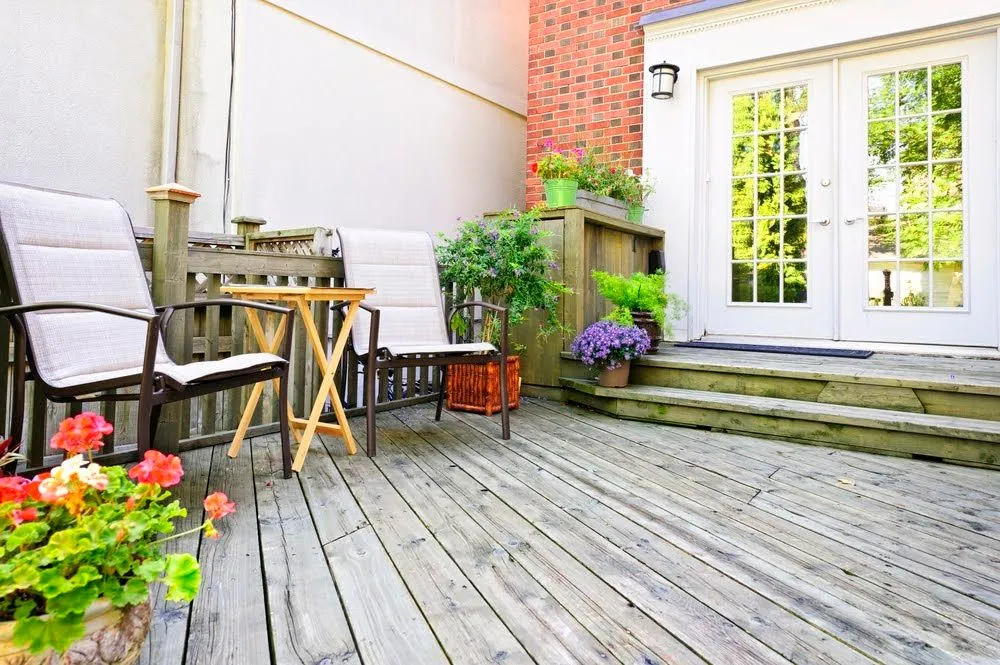
Color shapes thoughts, actions, and emotions while enhancing your home’s character. Distinguish your house by choosing unique colors for your house’s exterior features, such as decks, porches, sunrooms, pergolas, gazebos, patios, and pavers. Here is how to do it.
Identify Your Home’s Style and Neighborhood
Different styles, such as Victorian, modern, or colonial, have specific color palettes that complement their design. Opt for colors that enhance the features of your home, highlighting its unique details and creating a harmonious look.
Next, think about your neighborhood’s vibe and surroundings. The exterior color you choose should blend well with the overall aesthetic of your community. Take cues from neighboring homes and the natural environment. Muted and classic colors might be ideal if your neighborhood has a traditional feel. For more contemporary areas, explore bolder and more modern shades.
Examine Your Interiors
By considering the overall design and decor of your home’s interior spaces, you can select an exterior color that complements and harmonizes with the indoor aesthetic. Begin by assessing your home’s color palette, materials, and styles. Note prominent hues, textures, and finishes that define your interior spaces.
Next, draw inspiration from these interior elements to guide your exterior color choice. Opt for a color that echoes or contrasts with the ones you have identified indoors, creating a cohesive and visually appealing transition between the interior and exterior. This approach ensures a sense of continuity and a well-integrated look that enhances your home’s overall curb appeal and charm.
Use Color Wheels
When choosing colors for your home’s exterior, consider the color wheel a valuable tool. The color wheel comprises primary colors (red, blue, yellow), secondary colors (green, orange, purple), and tertiary colors that result from mixing adjacent primary and secondary colors.
To create a visually pleasing exterior, use complementary colors (opposites on the wheel) to bring vibrancy and contrast. Analogous colors (neighboring on the wheel) create harmonious, soothing combinations. Triadic schemes (equally spaced colors) offer a balanced and dynamic appearance.
Pay attention to the intensity of colors; muted tones bring subtlety, while bold hues make a statement. Keep the home’s architectural style and surroundings in mind—a Victorian house might benefit from rich, historic tones, while a modern dwelling could embrace sleek, neutral shades. Regularly test paint samples under different lighting conditions before finalizing your choice.
Don’t Get Caught Up in Trends
Trends can be fleeting and might not stand the test of time. Instead, focus on selecting colors that have a timeless appeal. This approach ensures that your home’s exterior remains visually pleasing and harmonious for years to come without becoming outdated quickly.
Additionally, prioritize choosing colors based on your home’s surroundings and natural environment. This helps your home blend seamlessly with its surroundings and enhances its curb appeal. You will create a lasting and elegant look by avoiding trendy colors and opting for classic, well-suited hues.
Choose Between Warm and Cool Colors
When picking colors for your home’s exterior, deciding between cool and warm tones involves understanding the emotional impact and visual effects each group brings. Warm colors, like reds, oranges, and yellows, evoke energy, vibrancy, and coziness.
They are ideal for creating a welcoming and lively atmosphere, often complementing traditional or Mediterranean-style homes. On the other hand, cool colors such as blues, greens, and purples offer a serene, calming, and sophisticated feel. They work well for modern or coastal designs, helping homes blend with nature.
If aiming to stand out, warm colors could make a bold statement, while cool shades might establish a harmonious blend with nature.
If you want beautiful exterior home aspects like decks, porches, sunrooms, gazebos, or patios, contact us for an estimate today. We look forward to working with you.